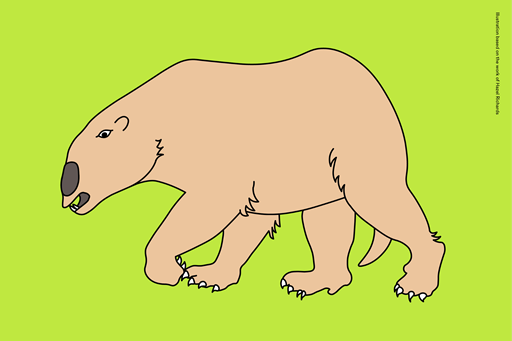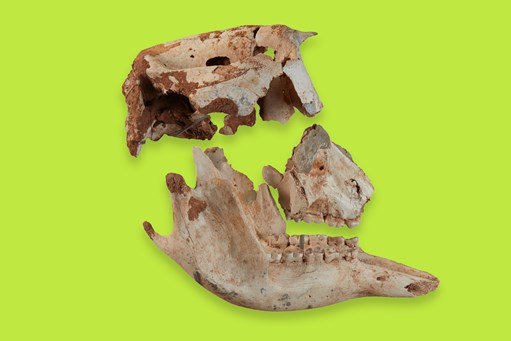7. Palorchestes azael
Mystery marsupial of Australia’s Ice Age
Palorchestes was a marsupial heavier than a buffalo and remains the biggest mystery of Australia’s Ice Age. This creature could have been seen by the First Peoples of Australia, along with the giant kangaroo Procoptodon and ‘marsupial lion’ Thylacoleo.
It had a tall, narrow skull, with tiny eyes, scoop-shaped front teeth, and a long, flexible snout. Its teeth and jaws look like those of a giant kangaroo, but Palorchestes was more closely related to wombats. Scientists think it may have used its muscular arms and clawed hands to tear apart tree ferns or even termite mounds for food.
The best-known fossils of Palorchestes come from limestone caves in Victoria. Museums Victoria scientists visiting the caves of Buchan, east Gippsland collected Australia’s most complete Palorchestes fossils.
About the animal
|
Scientific name |
Palorchestes azael |
|
How do you say its name? |
PAL-or-KESS-teece-uh-ZEEL |
|
How big? |
About two metres long and weighed nearly 1000 kilogrammes. |
|
When did it live? |
From 2 million years ago until only 40,000 years ago. |
|
What did it eat? |
Nobody's sure yet |
Fossil facts
|
Significant Victorian location |
Exceptional skull and limb bones found in the caves of Buchan and Murrindal, East Gippsland |
|
Traditional Owners |
|
|
Who named it? |
Founder of London’s Natural History Museum, Professor Richard Owen (1804-1892) |
|
Who found it? |
Most recently, an exceptional fossil skull was collected in 2001 by Museums Victoria palaeontologist David A. Pickering. |
|
What is special about it? |
Palorchestes is a bizarre mammal with extreme anatomy, unlike anything before or since. |
|
Significance of the fossil |
The most complete fossils of Palorchestes are found in eastern Victoria. |
|
Full name and meaning |
Palorchestes is Greek meaning ‘ancient leaper’. The first fossils were mistaken for a giant kangaroo. |








